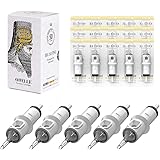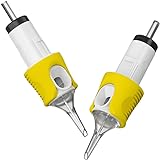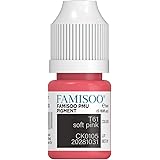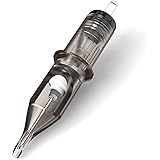Unlocking Creativity: Exploring Versatile Hand Lettering Styles for Every Project
In the vibrant world of creative expression, hand lettering offers a unique blend of artistry and personalization. It allows individuals to transform ordinary words into captivating visual statements, whether for greeting cards, personal journals, custom invitations, or any myriad of DIY projects. Hand lettering, unlike traditional typography, embraces the imperfections and individuality of the human touch, imbuing each stroke with character and soul. The accompanying video provides an excellent visual introduction to some fundamental and easy lettering styles that can kickstart your journey into this fulfilling craft.
Indeed, mastering basic hand lettering styles can significantly enhance your creative compositions, making them truly stand out. This guide aims to expand upon the foundational techniques introduced in the video, providing deeper insights and practical advice to help you cultivate your skills. We delve into the nuances of each style, offering additional context and inspiration to elevate your lettering prowess.
Mastering the Monoline Style: The Foundation of Fluidity
The monoline style serves as an essential starting point for any aspiring hand letterer, often mirroring one’s natural handwriting but with a refined touch. Characterized by lines of uniform thickness, its simplicity belies its versatility. To truly excel in monoline lettering, focus on consistency in stroke width and maintaining a steady hand. While the video demonstrates an all-caps approach, consider experimenting with interspersing capital and lowercase letters to add dynamic rhythm to your pieces.
Furthermore, the beauty of monoline lies in its clean readability and adaptability. It forms an excellent base upon which more complex styles can be built. Practicing fundamental letterforms with monoline helps develop muscle memory and an eye for proportion, crucial elements for any lettering artist. Consider using grid paper initially to guide your letter height and spacing, subsequently transitioning to blank paper as your confidence grows. Consequently, your ability to control line quality and shape formation will notably improve, laying a strong foundation for future exploration.
The Dynamic World of Block Letters: Structure and Playfulness
Block letters are a perennial favorite among hand letterers dueally to their bold presence and structural integrity. They offer an incredible canvas for personalization and creative embellishment. As demonstrated, the basic block letter is a powerful starting point, providing a solid, geometric shape that commands attention.
To further explore the potential of block letters, consider these expansions:
- Adding Dimension: Beyond simply outlining, you can create a 3D effect by projecting lines from the corners of your letters to simulate depth, as briefly touched upon in the video. Decide on a consistent light source direction, then shade the surfaces opposite to create a sense of volume.
- Internal Doodling: The interior of block letters can become a mini-canvas. Experiment with patterns such as stripes, polka dots, checkerboards, or even small illustrative elements related to your message. This adds a unique layer of visual interest and personality.
- Slab Serifs: While the video mentions “feet” or serifs, with block letters, you can introduce prominent, rectangular serifs, known as “slab serifs.” These thick, block-like extensions at the ends of strokes reinforce the sturdy nature of the letters and contribute to a more robust, sometimes industrial, aesthetic.
- Letter Stacking and Overlapping: Block letters lend themselves well to compositional techniques where letters are stacked vertically or slightly overlapped to create tight, impactful designs, particularly effective for logos or short, punchy phrases.
These variations transform simple block forms into sophisticated design elements, showcasing the remarkable versatility of this fundamental hand lettering style. Moreover, the structured nature of block letters provides an ideal playground for color experimentation, allowing for intricate color blocking or gradient fills within their defined boundaries.
Embracing Whimsy with Bubble Letters: Softness and Fun
Bubble letters offer a delightful contrast to the rigidity of block letters, characterized by their round, curvilinear forms. They naturally convey a sense of playfulness, youth, and informality, making them ideal for casual invitations, children’s projects, or any design where a lighthearted tone is desired. The core concept remains similar to block letters, but with softened edges and exaggerated curves.
To enhance your bubble letter creations, integrate some of these techniques:
- Internal & External Bubbles: As suggested by the style’s name, adding small, overlapping bubbles around or within your letters can amplify their whimsical effect. These don’t need to be perfect circles; varying sizes and translucency can create a charming, effervescent look.
- Squishy Effect: Experiment with making bubble letters appear “squishier” by slightly distorting their perfectly round edges, giving them a more organic, pliable feel. This often involves making some edges flatter while others remain plump.
- Shading for Plumpness: Similar to 3D effects, applying subtle shading along the edges of your bubble letters can enhance their volumetric appearance, making them seem genuinely plump and rounded, as if ready to pop.
Consequently, bubble letters provide an excellent avenue for injecting joy and approachability into your hand-lettered pieces. Their inherent softness makes them visually inviting and appealing across various informal contexts.
The Elegance of Serifs: Formal Flair and Historical Roots
Serif lettering styles carry an inherent sense of tradition, formality, and elegance, frequently seen in classic invitations, book titles, and historical documents. The distinguishing feature of serif letters is the “feet” or small decorative strokes attached to the ends of the main strokes. The video illustrates the fundamental concept: thickening the downstrokes and adding these decorative terminals.
Let’s elaborate on serifs further:
- Understanding Downstrokes: A downstroke is any part of a letter where your pen moves downwards. For example, the main vertical stem of an ‘E’ or the diagonal stroke of an ‘S’ that moves from top-left to bottom-right. Identifying these is crucial for correctly applying thickness and contrast.
- Variety of Serifs: Beyond the basic rounded triangular serifs shown, the world of serif typography is rich with variations. Consider exploring:
- Slab Serifs: Thick, block-like serifs (as mentioned with block letters).
- Hairline Serifs: Extremely thin, delicate serifs.
- Bracketed Serifs: Serifs that smoothly curve and connect to the main stroke.
- Unbracketed Serifs: Serifs that meet the main stroke at a sharp, often perpendicular, angle.
- Wedge Serifs: Serifs that are triangular, flaring out from the stroke.
- Achieving Contrast: The hallmark of a good serif style is the contrast between thick downstrokes and thinner upstrokes or horizontal strokes. This creates visual interest and contributes to the letter’s refined appearance.
To acquire proficiency in serif lettering, careful attention to detail is paramount. Observe how different typefaces apply serifs and stroke variations. Subsequently, practice replicating these details, gradually developing a confident hand in this sophisticated style. The precise placement and formation of serifs are what ultimately grant this style its distinctive charm and classic appeal.
Exploring Calligraphy and Faux Calligraphy: The Art of Flowing Script
Calligraphy, the art of beautiful writing, is a highly respected skill that demands considerable practice and specialized tools. However, as highlighted in the video, faux calligraphy offers an accessible entry point for those drawn to its elegant, flowing aesthetic without the steep learning curve of traditional techniques.
Faux Calligraphy Explained:
Faux calligraphy leverages your existing cursive handwriting skills. The process involves:
- Write in Cursive: Begin by writing your word or phrase in standard cursive. Focus on smooth connections and legible letterforms.
- Identify Downstrokes: Just like with serif letters, pinpoint all the downstrokes in your cursive letters. These are the parts where your pen naturally moves downwards.
- Thicken Downstrokes: Draw a parallel line alongside each identified downstroke, creating a thicker section.
- Fill In: Color in the space between the original stroke and the parallel line, creating a solid, bold downstroke.
This technique effectively mimics the thick-and-thin contrast inherent in traditional calligraphy, which is achieved through varying pen pressure with a flexible nib. Faux calligraphy, conversely, offers greater control over the stroke thickness, as you are essentially drawing the thickness rather than applying pressure. This method is particularly forgiving, allowing for easy corrections and refinements.
Moreover, the speaker’s preference for faux calligraphy, partly due to the ability to add design elements within the thickened strokes, presents an exciting avenue for further creativity. Consider these possibilities:
- Gradient Fills: Instead of a solid color, fill the thickened downstrokes with a subtle color gradient.
- Patterns: Introduce delicate patterns like tiny dots, stripes, or even botanical motifs within the bold areas.
- Outline Effects: After thickening, you could outline the entire letterform in a contrasting color for added definition.
Ultimately, faux calligraphy democratizes the elegant look of script, making it accessible to a broader audience of hand lettering enthusiasts. It allows for the creation of beautiful, calligraphic-inspired pieces without the need for specialized pens or extensive traditional practice.
Advanced Techniques for Polished Lettering: Beyond the Basics
Once you’ve grasped the fundamental styles, you can begin to incorporate advanced techniques that refine your work and infuse it with distinct character. The video briefly mentions a few crucial tips that deserve further exploration:
Creating 3D Lettering Effects
The ability to transform flat letters into three-dimensional forms adds significant visual depth and impact to your work. While easier with block and bubble letters, the principle can be applied to other styles with practice. The key, as noted, is establishing a consistent light source. Imagine where your light is coming from, then project shadows and depth lines on the opposite side of your letters. This consistent approach is crucial for believable dimensionality. Experiment with different shadow styles—sharp, diffused, or even colored—to match the mood of your piece.
The Art of Cleaning Up Your Lettering
One of the most valuable tips for any hand letterer is the understanding that your initial strokes are not permanent. The process of “cleaning up” involves refining edges, smoothing connections, and correcting any wobbly lines. This is particularly vital for styles like calligraphy, where crisp lines are paramount. Utilize a fine-tipped eraser to gently remove pencil guidelines or stray marks, and a fine-liner pen or brush pen to sharpen the contours of your letters. This meticulous attention to detail can elevate a good piece of lettering to a great one, ensuring a professional and polished finish. Consequently, embrace the editing process as an integral part of creation, rather than viewing it as a sign of imperfection.
Varying Letter Sizes for Enhanced Personality
The notion that all letters in a word must be uniform in size is a misconception that can stifle creativity. As suggested, varying the height and width of individual letters within a word or phrase imbues it with personality and dynamic movement. This technique, often referred to as “bouncing” or “stacking,” breaks the monotony of uniform alignment and injects a playful, organic feel. For instance, making certain letters slightly taller or wider than their neighbors creates visual interest and an impression of spontaneity. Experiment with making key letters stand out, or subtly altering sizes to create a gentle wave-like effect. This approach ultimately transforms static text into a lively, expressive piece of art.
Monoline with Downstroke Thickening: A Simple Yet Impactful Twist
A final, yet highly effective, tip involves applying the downstroke thickening principle, typically seen in serifs and faux calligraphy, to the simple monoline style. This technique effortlessly adds visual weight and sophistication to an otherwise uniform style without requiring a complete overhaul. By simply identifying the downstrokes in your monoline letters and subtly thickening them, you introduce a subtle contrast that makes the letters appear more refined and intentionally designed. This modification allows for a bridge between the simplicity of monoline and the elegance of more complex styles, proving that minor adjustments can yield significant aesthetic improvements in hand lettering. It is a testament to the fact that understanding fundamental concepts, such as downstrokes, can be applied across various hand lettering styles to create diverse and appealing visual effects.











